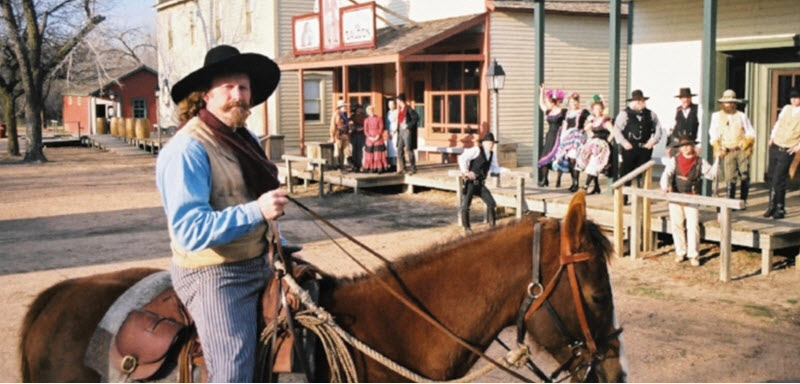Contents

The Old Cowtown Museum houses and exhibits historical artifacts from the 19th-century trading post and cattle town that eventually became the city of Wichita. Among other things, this 23-acre open-air museum features over 50 historic and re-created buildings. It’s both a museum and a living history site, with many interesting historic preservation projects going on.
Established back in 1952, this is one of the oldest open-air museums in the country. It focuses on the later part of the 1800s, when Wichita transformed from a trading post and frontier settlement to a cattle town, and then started to become a manufacturing area.
Where is the museum?
The Old Cowtown Museum is located along the Arkansas River in central Wichita, off the original Chisholm Trail.
Address: 1865 West Museum Blvd, Wichita, Kansas 67203, United States
Coordinates: 37°41′38″N 97°21′44″W
What can I see here?
- There are over 50 historic and re-created buildings here.
- In total, the artifact collection contains over 12,000 items – everything from 19th-century wagons to dainty teaspoons.
- Live animals are kept at the museum site, including sturdy Percheron draft horses, a short-horned Durham milk cow, two sheep, a goat, and some hens.
- The guides wear old-fashioned clothing, to blend in with the environment.
- Throughout the year, the museum offers a wide range of events and hands-on activities.
In the movies
Examples of movies that have used the Old Cowtown Museum as a filming location:
- Skylark, filmed in 1992
- Touched by Fire, filmed in 2004
- Bloody Dawn, filmed in 2006
- The Only Good Indian, filmed in 2007
- The Bender Claim, filmed in 2013
- Road to Valhalia, filmed in 2013
- Wichita, filmed in 2013
- Midnight Shanghai, filmed in 2016
Accreditation
This museum is accredited by the American Alliance of Museums, the highest national recognition achievable by a museum in the United States.

What’s the Chisholm Trail?
As mentioned above, the Old Cowtown Museum is located just off the Chrisholm Trail. This trail was instrumental in turning Wichita into a “cowtown”, as it was used to drive cattle overland from ranches in Texas to railway stations in Kansas during the post-Civil War era.
The trail is named after the Scottish-Cherokee merchant Jesse Chisholm, who established the trail together with his friend Suck-tum-mah-kway (Black Beaver), a Lenape cattle rancher.
As the railroad reached farther and farther, the end of the trail moved. Early on, the trail ended in Abilene, Kansas, but it then moved to Newton, Kansas, and soon afterward to Wichita, where Chisholm had established a trading post in the 1860s. The trail ran along the eastern side of Wichita, and in 1872, the Southwestern Railroad completed a branch line to Wichita. As a result, Wichita became a railhead for the cattle drives from Texas.
When the railroad system expanded even more, Wichita ceased to be a railhead, and the era of Wichita the Cowtown was over.
